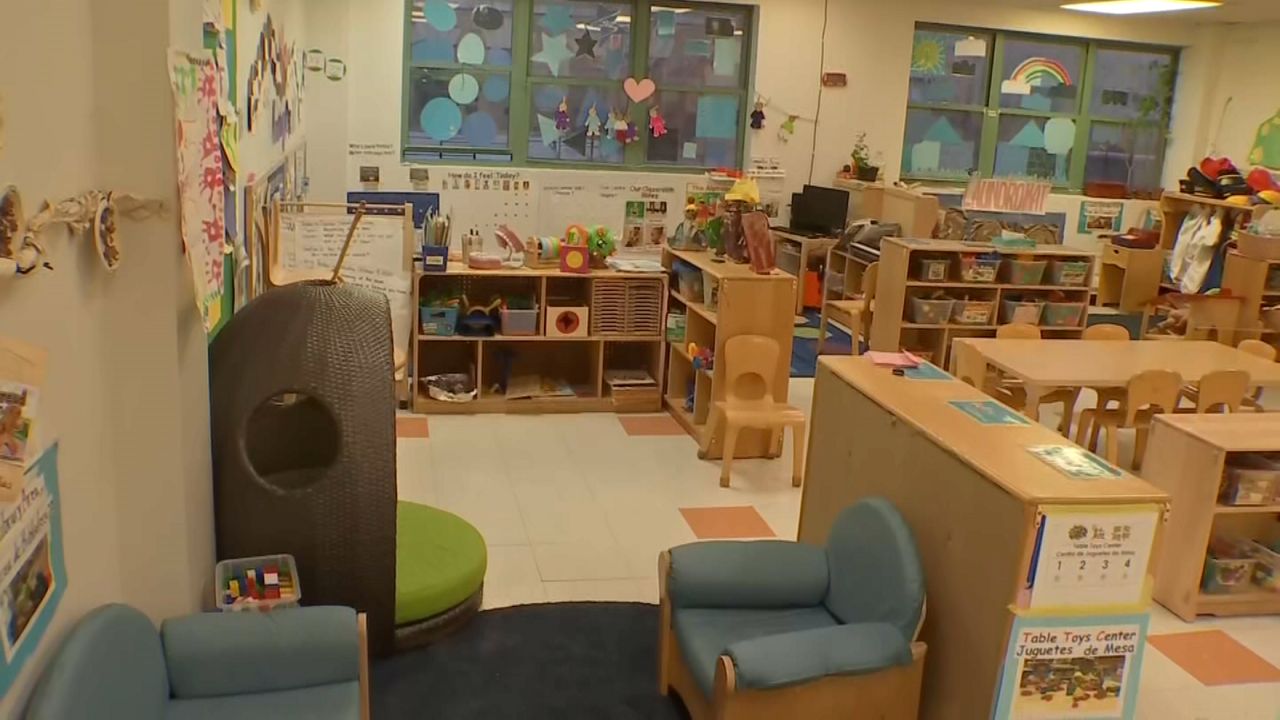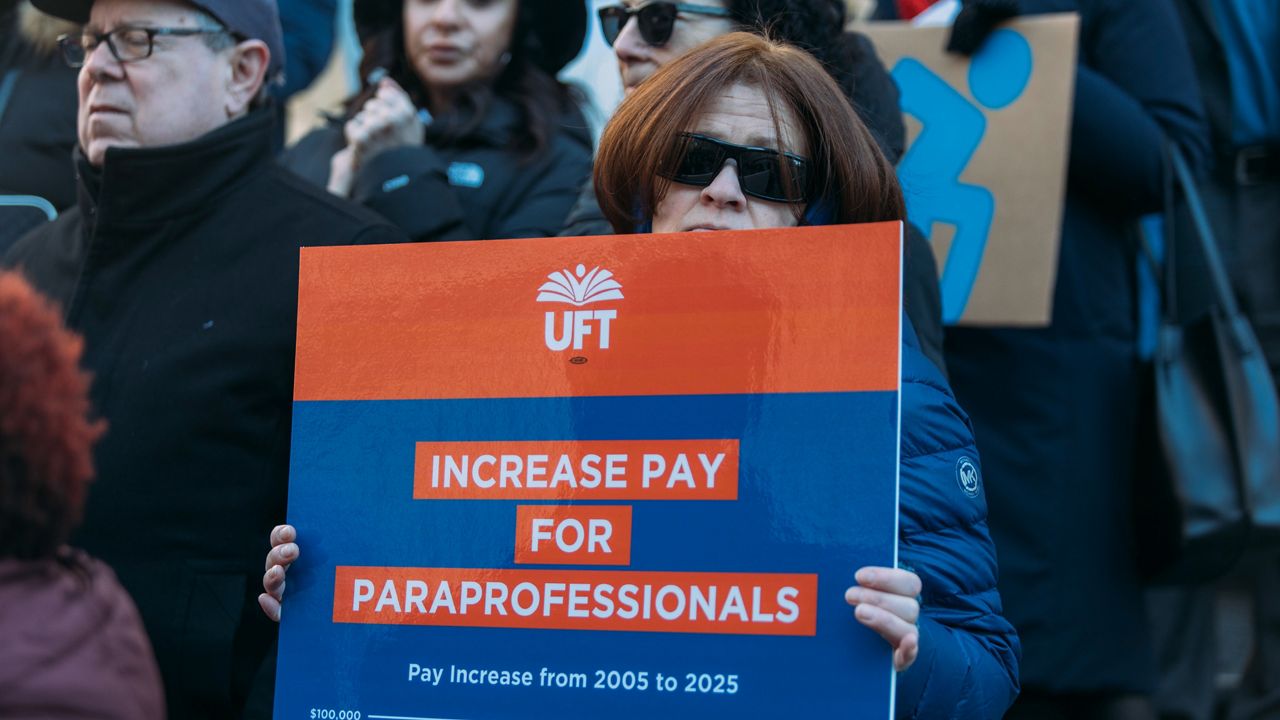School was out last week for mid-winter recess, but it wasn’t much different than a typical weekday for Munir El Sayed. The 16-year-old has not been to school at all since last June.
“We tried on the school bus and we also tried driving him there ourselves. Just would not go, flat out refusing to go to school,” Renée Marhong, Munir’s mom, told NY1.
Munir isn’t alone. Citywide, last school year, about 40% of students were chronically absent — meaning they had missed 10% of the year’s school days, which translates into 18 days.
What You Need To Know
- Citywide last school year, about 40% of students were chronically absent, meaning they had missed 10% of the year’s school days, which translates into 18 days
- Almost 52% of students with disabilities and 68% of students at District 75 schools, which serve those with the most intensive needs, were chronically absent
- Mental health experts say there's been a rise of depression and anxiety in adolescents, sometimes resulting in what's called school refusal
That number was higher for students with disabilities: almost 52% were chronically absent. And it was higher still for students like Munir, who attend District 75 schools, serving those with the most intensive needs: 68%.
Munir used to enjoy school and did not understand why he couldn’t attend during the pandemic. He did go back to school for a while, but began refusing to attend last spring.
“We’ve tried to explain to him. We’ve tried to force him. We’ve tried to lure him. We’ve tried to bribe him. All of the things that one would think of — we have tried it and it doesn’t work,” Marhong said.
There are many reasons a child may be chronically absent. But after the pandemic, mental health experts like Ari Fox, a child psychotherapist and founder of the practice Cope With School NYC, say they’ve seen an increase in depression and anxiety in children. That can result in something called school refusal.
“Schools are really overwhelmed. Families are overwhelmed. And there’s a shortage of resources on how to deal with this complex issue,” Fox said.
Marhong says she asked her child’s school and other education department staff for help for months, and they tried some small interventions. Munir loves bowling, so the school tried to lure him onto the bus with an iPad loaded with a bowling game.
But ultimately, as his absence continued, the school called the Administration for Children’s Services, which arrived at Marhong’s door unannounced, inspected her home and interviewed her children. Marhong says they told her they found no evidence of abuse or neglect. She asked ACS for help, too.
“They tried to find resources to help us. They didn’t find anything, surprise, because there’s nothing out there that I’ve been able to find,” Marhong said. “There’s nothing that’s been offered to us to help this child and to help our family get him in school.”
The visit didn’t make her son feel any more comfortable about going to school. And she says forcing Munir into school isn’t really an option, and could lead to someone being hurt.
“If anyone has a 16-year-old, you tell me how it is to force them, to physically force them, to do anything. Especially a child that you cannot reason with, a child that has no comprehension of: ‘if I do this, that this will happen.’ He doesn’t get it.” she said.
She’s now trying to get her son approved for home instruction, a process that requires an evaluation by medical professionals. But in the months that he’s been staying home from school, Munir has also become reluctant to leave the house for doctor’s visits, or even walks around the neighborhood. It took time to find someone who would do the evaluation virtually.
She says the DOE should be more proactive in trying to find solutions like that for children like hers.
“You’re on your own, and then when you’re left on your own, you’re penalized by having ACS called. So what type of system is that?” she asked.
A DOE spokesperson said the city is working to improve attendance for all students.
“It is the work of every educator to improve attendance across our school system and ensure that every single student feels safe, seen, and welcomed every day in their school buildings and communities, and engaged in their classroom learning,” spokesperson Nicole Brownstein said. “While absenteeism increased nationally post-pandemic, we are focused on addressing the needs of our students at the school and classroom levels.”
All superintendents are working to provide schools and students with support to encourage attendance, and for the first time the city’s attendance policy encourages schools to proactively prevent absences by contacting chronically absent students, and offering personalized help — like academic recovery programs, mentoring, or positive texts, phone calls and mailers.
As for when schools call ACS, reports of educational neglect for poor attendance are only required under state law if a series of conditions are all met: the parent is aware or should be aware of the absences, and the parent is contributing to the absences or failing to address them, the absences are impairing the child’s education, and the school has exhausted other outreach efforts or intervention services, like counseling.
But schools may also contact ACS to connect a student’s guardians with the ACS Family Assessment Program, which the education department says offers support for families dealing with school refusal and other challenges.
For Marhong, the ACS visit and inspection of her home and children felt like she was being penalized, not offered help.
“When I pray at night, it’s that this kid goes to school. That’s what I want to happen. So you’re calling ACS, it makes absolutely no sense. All we want is for this kid to go to school,” she said.
And she wants people to know that for many chronically absent kids, it’s not just a matter of cutting class.
“For these kids, like my son in particular, but many kids, this is not an issue of they’re lazy and they don’t want to go to school, they’re smoking cigarettes or something like that. This is not an issue of that at all. This is like a mental issue. This is an issue of a child who is really having either anxiety or doesn’t understand or needs certain supports. It’s bigger than truancy,” she said.






_PKG_Edu_Budget_CLEAN_133527498_1536)


